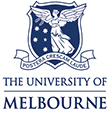Insights into the pathogenic mechanisms associated with the SARS-CoV-2 spike protein
Authors:
- Argyrou, Mia
- Pitsillou, Eleni
- Hung, Andrew
- El-Osta, Assam
- Karagiannis, Tom C.
Details:
Journal of Structural Biology, Volume 217, Issue 3, 2025-09-30
Article Link: Click here
Severe acute respiratory syndrome coronavirus 2 (SARS-CoV-2), the pathogenic agent responsible for the coronavirus disease 2019 (COVID-19) pandemic, uses the trimeric spike protein to gain entry into the host cell. Structural studies have revealed that the spike protein is comprised of the S1 and S2 subunits. The S1 subunit of the spike protein contains the receptor-binding domain (RBD), which binds to the human angiotensin-converting enzyme 2 (ACE2) receptor. The interaction between the RBD and ACE2 facilitates membrane fusion and host cell infection. The SARS-CoV-2 spike protein also contains a unique insertion of four amino acids that results in the 682-RRAR↓S-686 polybasic furin cleavage motif at the boundary of the S1 and S2 subunits. The furin cleavage motif contributes to the high infectivity and transmissibility of SARS-CoV-2. This review provides a comprehensive analysis of the molecular interactions of the spike protein, with a specific focus on the RBD and furin cleavage site. In addition to examining the binding characteristics with ACE2, the interactions with alternative receptors, such as neuropilin-1 (NRP1) and the nicotinic acetylcholine receptors (nAChRs) are highlighted. The ability of the spike protein to bind alternative receptors and host factors has been linked to the pathophysiology of COVID-19 and the persistence of symptoms in the post COVID-19 condition. Furthermore, we examine the impact of spike protein mutations on receptor affinity and disease severity. SARS-CoV-2 continues to evolve, with variants remaining an ongoing threat to public health. Understanding these molecular interactions is critical for the development of novel therapeutic interventions.


